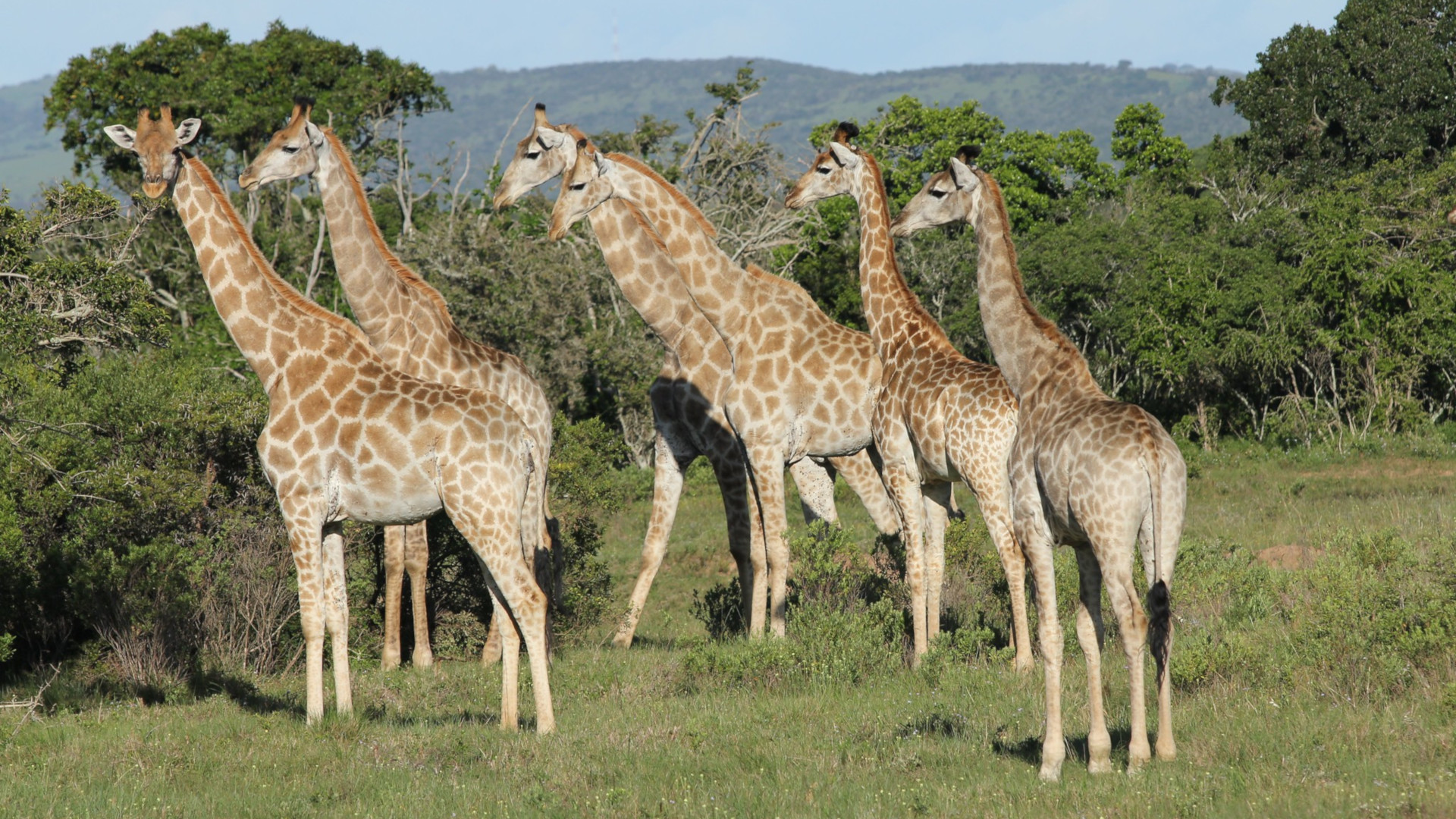Would banning trophy hunting actually harm conservation efforts, as some scientists argue? Or do other more effective approaches to funding species protections already exist?
Those are the conflicting positions taken over the past few months by dozens of scientists and conservation leaders, whose dueling letters in the journal Science have kicked off a debate over the future of the often-divisive practice of hunting big game for big bucks.
The controversy started this past August when an initial letter in Science — from conservation biologist Amy Dickman of the University of Oxford, four additional authors and more than 120 other signatories — argued that banning trophy hunting would “negatively affect conservation efforts” and that “hunting reforms…should be prioritized over bans.”
The authors did admit that many of them consider trophy hunting “repugnant,” but they also argue that controlled trophy hunting is still better than unregulated killing, which they say can have “serious repercussions for conservation and animal welfare” because it’s more prevalent in areas without tourism operations.
As you might expect, a flurry of responses from other scientists quickly followed. The Oct. 25 issue of Science contained six letters refuting the Dickman letter’s claims, with counterarguments ranging from the ethics of trophy hunting to the lack of scientific evidence for its benefits.
Several letters also pointed out that more effective conservation funding options already exist. One response even labeled the Dickman letter “defeatist” for defending business-as-usual practices instead of promoting these alternative conservation activities.
That letter argued that bans actually offer an opportunity for conservation to develop new ideas. “Trophy import bans present an opportunity to rethink how we can conserve wildlife in non-extractive ways that are consistent with shifting public opinion,” the letter stated.
Katarzyna Nowak, the lead author of that response and a fellow at The Safina Center (as well as a Revelator contributor), says the letter had two main goals.
“We wanted to get behind some of the visionary non-extractive efforts already happening and show that trophy hunting is not irreplaceable,” she says. “There is so much innovation happening in Africa, led by Africans. I don’t want to call these ‘alternatives’ necessarily, because everything mentioned in our letter is already happening.”
One of the approaches identified in the letter involves diversifying nature-based tourism beyond wildlife viewing and photography. An example is a series of bushcraft hunter-gatherer training courses taught in conjunction with the Hadza people in Tanzania.
“Bushcraft has a very small footprint and makes for a much richer cultural exchange between foreign tourists and local people,” Nowak says. “You spend an extended period of time learning from people on their land. You aren’t just coming in and shooting something within hours of landing at the airport. A lot of us are not against hunting. We’d love to see [more of] the kind of hunting in the bushcraft course.”
Another option Nowak points to is the development of agri-tourism, which brings visitors to a farm or ranch — an especially valuable funding option in areas along the boundaries between agricultural and natural lands. For example, fences made of beehives have been effective at keeping elephants from destroying crops in Kenya and Tanzania (elephants are afraid of bees, which can sting their eyes and other tender parts). A group of Tanzanians have taken advantage of the unique nature of these systems by forming an NGO to encourage visitors touring a nearby national park to also come see the bee fences on local farms.
Other options include transitioning to resource management by indigenous communities, which has successfully protected natural resources in parts of Ethiopia. Tourism reforms could encourage domestic tourism, which keeps income within the country that generates it. Domestic tourism in many developing countries is currently nearly nonexistent; residents travel mainly to visit friends and relatives, not to see the sights.
Although these types of activities are starting to take off, they remain limited. The Dickman letter argues that these new options are not “viable alternatives” in most places, especially regions that “are too remote or unappealing to attract sufficient visitors.”
Nowak counters that argument, saying it takes time for new systems to proliferate.
“We have to be patient,” she says. “It will be slow at first, but to continue to say year after year that trophy hunting is irreplaceable and not taking any alternatives seriously is a problem.”
She points out that no single idea is likely to supplant trophy hunting on its own, but adds that having multiple options — not just trophy hunting or photo-tourism — improves the overall chance of success.
Other researchers and experts agree.
“Alternatives to trophy hunting are a big part of the current discourse,” says Chelsea Batavia, a post-doctoral researcher in Oregon State University’s Department of Forest Ecosystems and Society. “Those who say ‘either trophy hunting or nothing at all’ are struggling from an incredible lack of imagination. Some of these alternatives are novel and experimental, but that is the nature of adaptive management.”
Batavia also approaches the debate from a different angle. She co-authored a letter making an ethical case for ending trophy hunting.
The Dickman letter, she says, “strongly stated that there is sort of incontrovertible evidence for trophy hunting. There is not scientific consensus on it and we wanted to push back.” That pushback is strongly grounded in both ethics and science.
“Scientifically, in some settings, trophy hunting does support conservation and locals,” Batavia says, “but there is an obvious cost to individual animals.” Other, more complex ethical issues include whether the practice aligns with accepted principles — such as “killing is wrong” — or exemplifies unacceptable virtues, such as aggression. Another argument addresses whether or not animals have rights; if they do, killing one and taking a body part surely violates those rights.
Ethically, Batavia argues, we should address the effects of those lost lives in our policy, but she says trophy-hunting advocates don’t go down that road.
“To remain wedded to this one practice that has so many ethical issues around it, without even having a serious conversation about other options, is a problem,” she says.
Richard Thomas of TRAFFIC, a nongovernmental organization working globally on trade in wild animals and plants, also agrees that well-regulated hunting can have positive impacts for some species — for example, the restoration of the southern white rhino — but he stresses that good management and regulation play critical roles.
“Trophy hunting has to be sustainable and well-managed, and seen to be well-managed,” he says. “There needs to be transparency about where benefits derived from it are going.”
The Dickman letter acknowledges that current levels of transparency for trophy hunting leave “considerable room for improvement,” but it also argues that the practice is still important to reduce poverty through sustainable wildlife management, a major element of African countries’ ongoing call for a New Deal for Rural Communities.
However, several of the other responses questioned how much trophy hunting actually benefits people and communities. Nowak’s letter cited a study that showed local inhabitants in Kyrgyzstan “receive basically no economic benefits” from trophy hunting, and a report from Economists at Large found that communities in trophy hunting areas only see, on average, about 3 percent of the gross revenue. In addition, the report found that trophy hunting income represents less than 2 percent of total tourism revenues in Africa.
There’s one more point to consider: Thomas warns that the legal export and import of hunting trophies can provide a cover for illegal activities such as poaching. We’ve seen this with elephants, rhinos, lions and other species.
The letters in Science come at a precarious time for trophy hunting, which faces changing public opinion and a rise in regulations against it. France, Australia and The Netherlands have recently banned importing trophies from certain species. Something similar could happen in the United States, where the recently reintroduced Prohibiting Threatened and Endangered Creature Trophies (ProTECT) Act aims to amend the Endangered Species Act to prohibit the import of trophies from endangered and threatened animals.
The industry is obviously feeling the pressure, which some experts speculate may have led to the Dickman letter and also contributed to the nature of the subsequent discussion. After the letter was published, some of its signatories were revealed to have ties to pro-hunting organizations, including the Dallas Safari Club and Safari Club International. Before this revelation, Science did not require writers to its letter section to follow the journal’s normal policy of declaring potential conflicts of interest. It now does.
![]()


